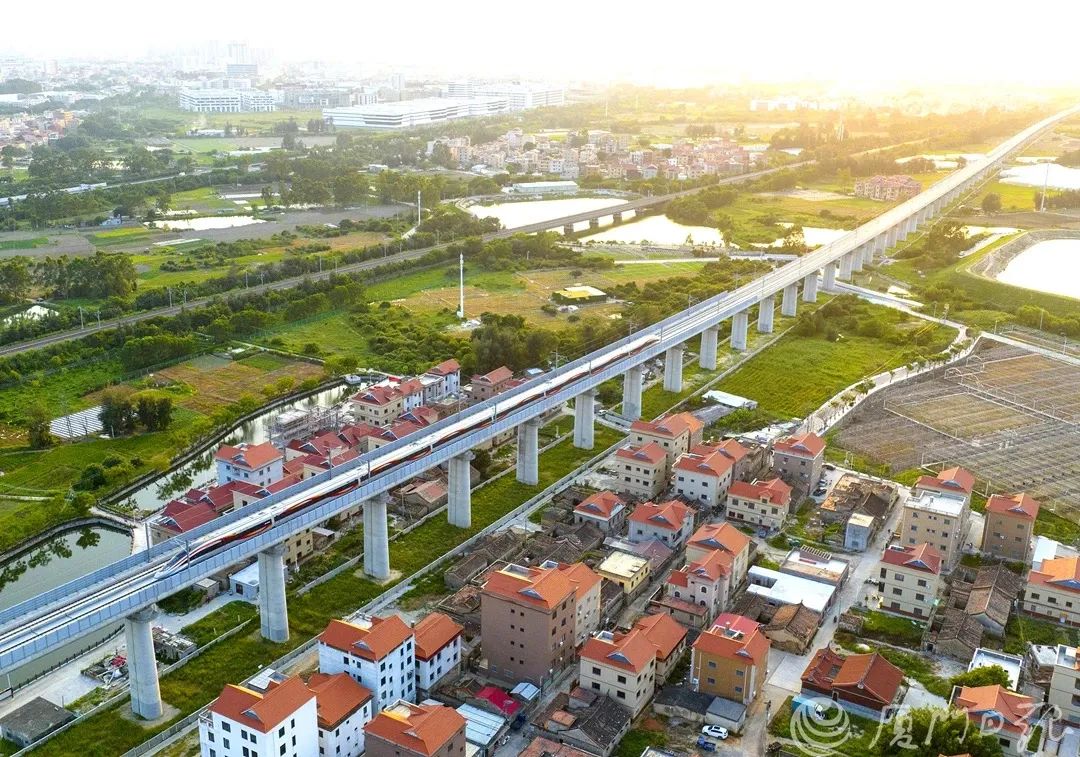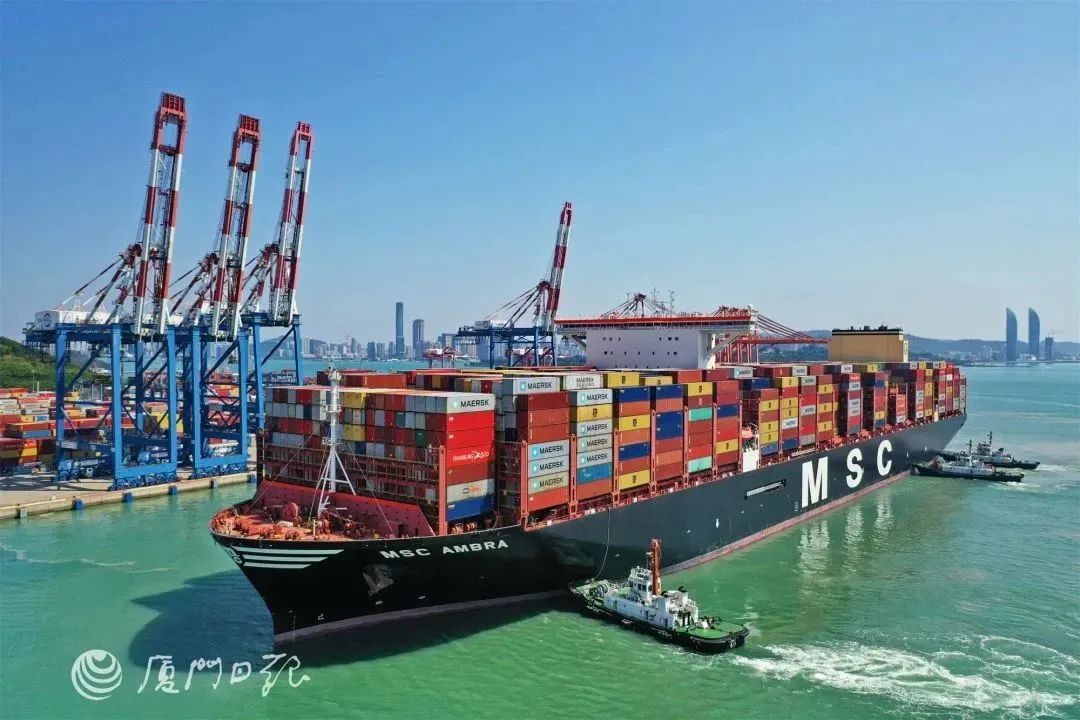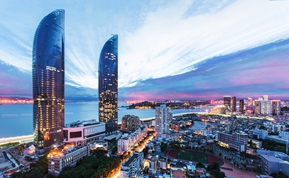City acts to be local, overseas commerce force

A view of the Fuzhou-Xiamen-Zhangzhou High-speed Railway. [Photo/Xiamen Daily]
Xiamen – a coastal city in East China's Fujian province – has been strengthening its competitive advantages gained from its reform and opening-up.
It's focused on promoting the connection and mutual promotion of the domestic and international circulation in the city.
"This will enhance the linkage effect between domestic and international markets and resources, thereby promoting Xiamen to become a mecca for industrial development," according to the city's development and reform commission.
The Xiamen Xiang'an International Airport, which is currently being built, recently completed the concrete structure capping of its terminal building. The airport is projected to begin operations by 2026.
In addition to thousands of builders, many robots – including measurement robots and plastering robots – have been applied in the project, in order to balance the speed and quality of construction.
The targets are for the airport to achieve an annual passenger throughput of 76 million people, cargo and mail throughput of 1.35 million metric tons and over 70 international routes by 2035.
Since its opening before the eight-day holiday for the Mid-Autumn Festival and the National Day, the Fuzhou-Xiamen-Zhangzhou High-speed Railway has transported about 150,000 passengers.
Fujian province recently released a guideline on several measures to create a "1-hour living circle" around the railway – which strengthened passenger transportation services – and it proposed that freight transport also be driven by the construction of the railway.
"In the long run, the railway will promote Xiamen's integration into the 'Eight Horizontal and Eight Vertical' national high-speed railway networks in China – and promote its high-quality construction to become a node city for the new pattern of development," said the director of the municipal railway construction department.
The route network under the "Silk Road Maritime," and with Xiamen Port as the node, has formed a support for external commerce and trade.

A fully loaded cargo ship is docked at Xiamen Port. [Photo/ Xiamen Daily]
As of September, the "Silk Road Maritime" boasts 116 named routes, reaching 131 ports in 43 countries and regions around the world. The total number of alliance members is 317, with transport containers exceeding 14 million twenty-foot equivalent units, or TEUs – the standard container size.
This has led to a more efficient and smooth supply chain system. Indeed, Xiamen is one of the first batch of supply chain innovation and application demonstration cities in China, with 19,000 supply chain enterprises there.
Its trade in bulk commodities – such as steel, coal, textiles, rubber and grain – has made it a leading force in the country.
Why Xiamen
-

Xiamen is one of the most economically competitive cities in China and was one of the first Special Economic Zones on the Chinese mainland. As a vice-provincial city independently listed on the State development plan, it has provincial-level authority in economic administration and local legislative power. In 2010, the Xiamen SEZ was expanded to cover the entire municipality. Today, Xiamen is a modern and international port city.
